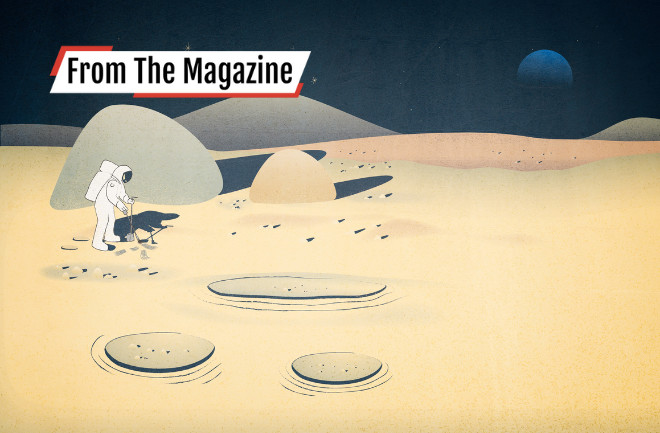Andrea Mosie greeted me at the doorway to the moon with a wink. “Are you ready?” she asked. I had been warned about the technical procedures that would precede my visit, but I was not prepared for what I would see, and she knew it.
Only a few hundred humans have ever been to space. Only a handful have ever walked on the moon. But there is one other way to experience that other realm, and it is through a doorway at NASA’s Johnson Space Center in Houston. I entered a boringly tan federal building, walked up an undecorated flight of stairs, and reached the vault of our stars. It’s called the Astromaterials Acquisition and Curation Office, and it’s where you can meet 842 pounds of the moon, up close and personal. Mosie is their primary caretaker, and she promised to introduce me.
Only five people on Earth get to touch these rocks, contained in the Lunar Sample Lab, which holds the bulk of the material returned to Earth during the Apollo missions. If you’re the guy who picked up a rock from the lunar surface, they’ll make an exception, Mosie told me. But the curators who work with Mosie undergo lengthy training before they begin work preparing the rocks for scientists, who themselves spend considerable time getting ready to request just a few grams of moon.
Because of the Apollo program, which ran between 1962 and 1972, the glimmering orb that illuminates our nights and accompanies our days was finally made manifest. From its unique, disorienting point of view, the program revised our thinking about the universe, philosophically and scientifically. Apollo brought the moon down to Earth and Earth down to size. And the rocks in the Lunar Sample Lab are a testament to that transformation — a symbol and a source of new lunar knowledge.

